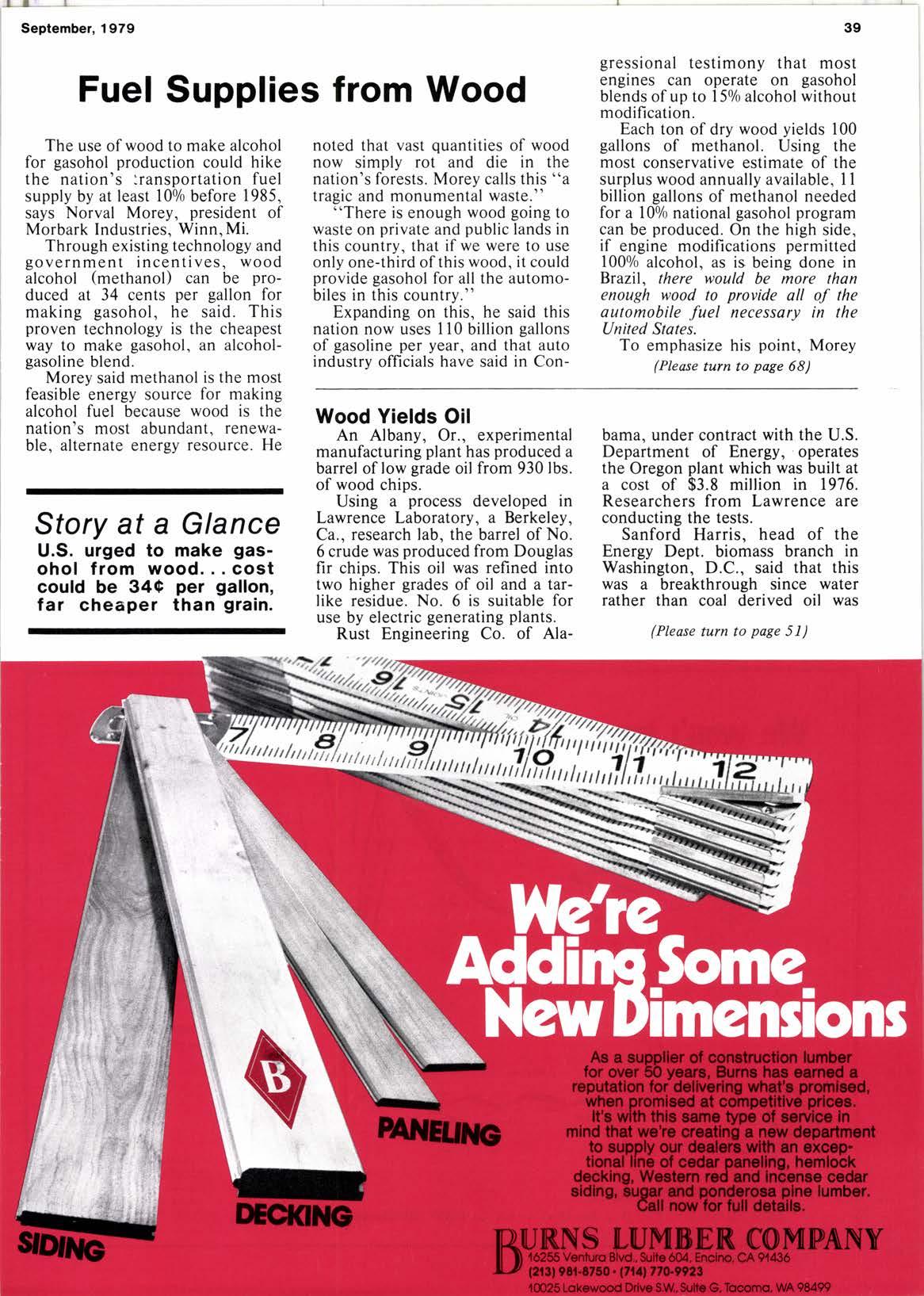
1 minute read
Fuel Supplies from Wood
The use of wood to make alcohol for gasohol production could hike the nation's :ransportation fuel supply by at least 100/o before 1985, says Norval Morey, president of Morbark Industries, Winn, Mi. Through existing technology and government incentives, wood alcohol (methanol) can be produced at 34 cents per gallon for making gasohol, he said. This proven technology is the cheapest way to make gasohol, an alcoholgasoline blend.
Morey said methanol is the most feasible energy source for making alcohol fuel because wood is the nation's most abundant, renewable, alternate energy resource. He
Story at a Glance
noted that vast quantities of wood now simply rot and die in the nation's forests. Morey calls this "a tragic and monumental waste."
"There is enough wood going to waste on private and public lands in this country, that if we were to use only one-third of this wood, it could provide gasohol for all the automobiles in this country."
Expanding on this, he said this nation now uses 110 billion gallons of gasoline per year, and that auto industry officials have said in Con-
Wood Yields Oil
An Albany, Or., experimental manufacturing plant has produced a barrel oflow grade oil from 930 lbs. of wood chips.
Using a process developed in Lawrence Laboratory, a Berkeley, Ca., research lab, the barrel of No. 6 crude was produced from Douglas fir chips. This oil was refined into two higher grades of oil and a tarlike residue. No. 6 is suitable for use by electric generating plants. Rust Engineering Co. of Ala- gressional testimony that most engines can operate on gasohol blends of up to 150/o alcohol without modification.
Each ton of dry wood yields 100 gallons of methanol. Using the most conservative estimate of the surplus wood annually available, I I billion gallons of methanol needed for a 100/o national gasohol program can be produced. On the high side, if engine modifications permitted l00o/o alcohol, as is being done in Brazil, there would be more than enough wood to provide oll of the automobile fuel necessary in the United States.
To emphasize his point, Morey
(Please turn to page 68) bama, under contract with the U.S. Department of Energy, operates the Oregon plant which was built at a cost of $3.8 million in 1976. Researchers from Lawrence are conducting the tests.
Sanford Harris, head of the Energy Dept. biomass branch in Washington, D.C., said that this was a breakthrough since water rather than coal derived oil was
(Please turn to page 51)










